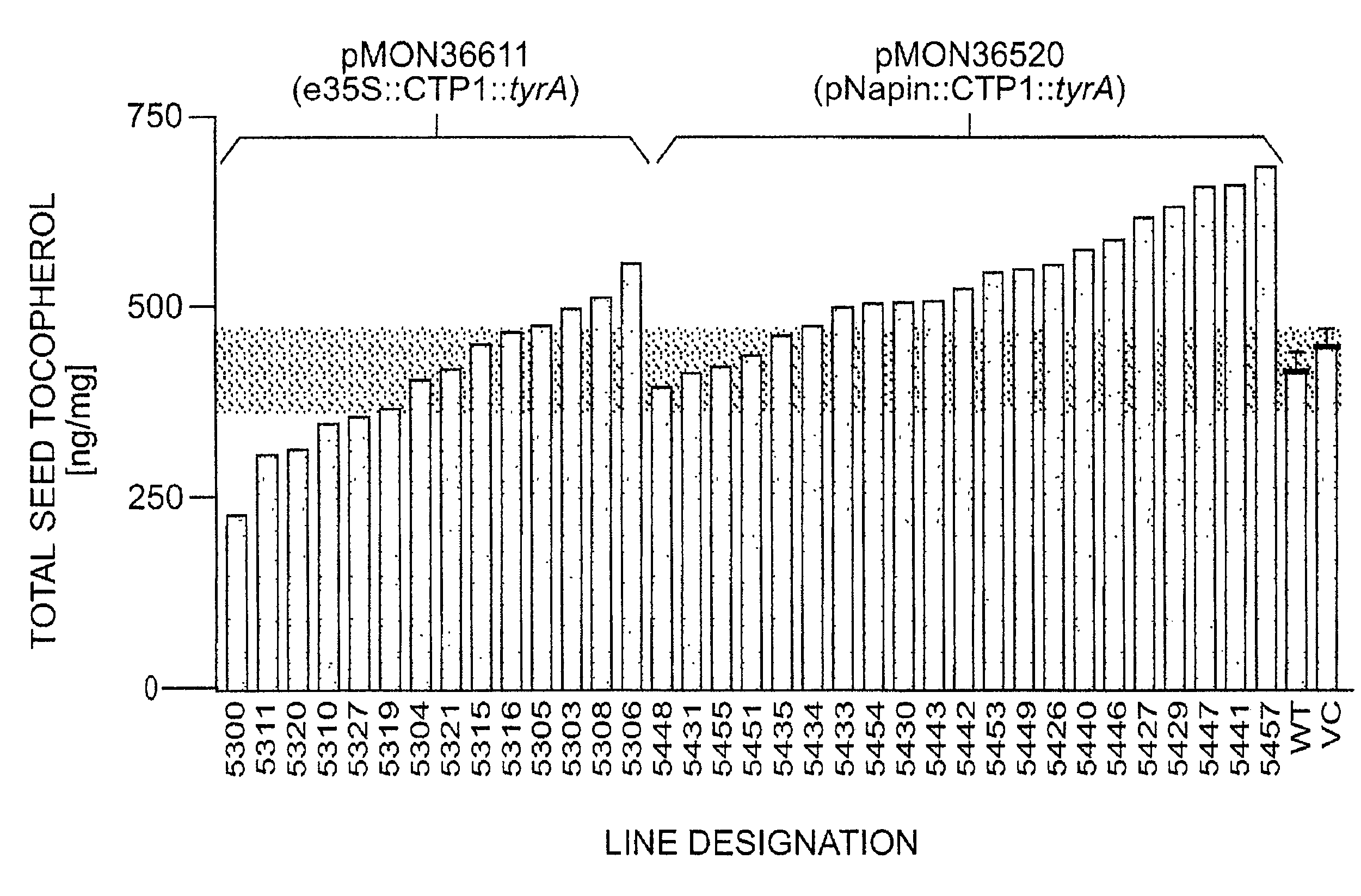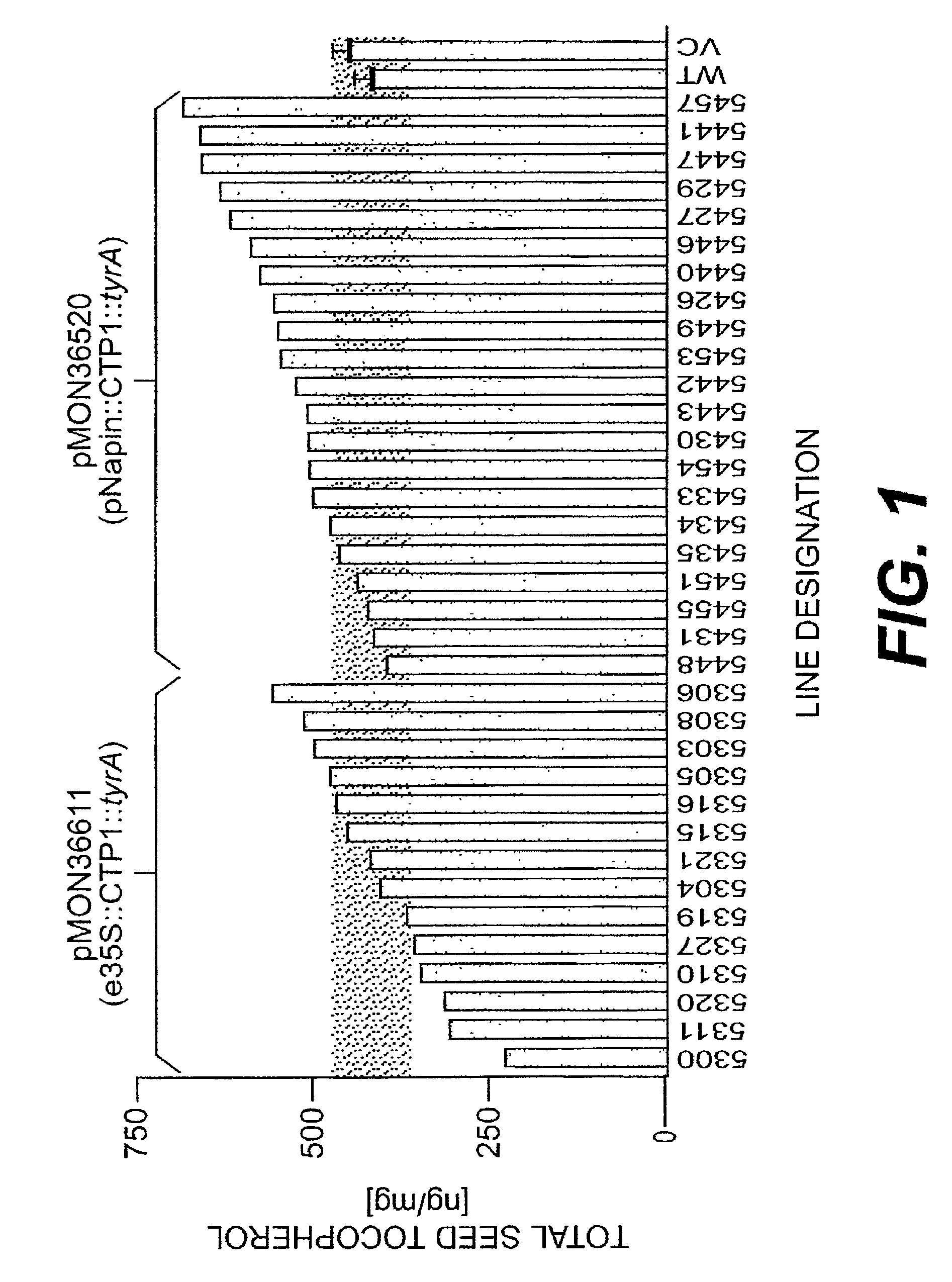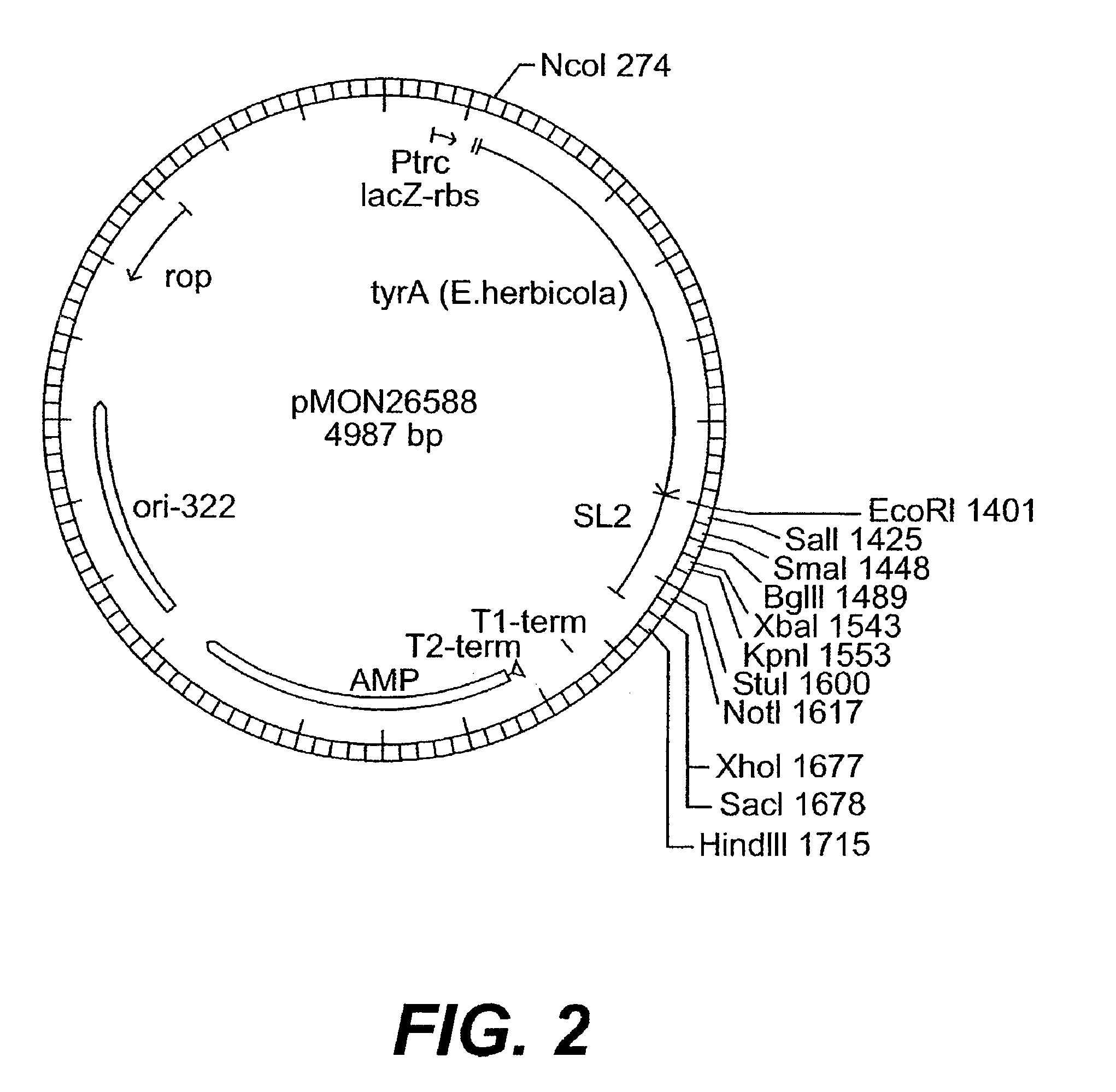Tyra genes and uses thereof
a technology of tocopherol and genes, applied in the field of plant genetics and biochemistry, can solve the problems of relatively high cost of supplements and difficult to achieve the recommended daily intake of 15-30 mg of vitamin e from the average american diet, and achieve the effect of increasing the tocopherol level
- Summary
- Abstract
- Description
- Claims
- Application Information
AI Technical Summary
Problems solved by technology
Method used
Image
Examples
example 1
Cloning of tyrA from Erwinia herbicola
[0331] Vectors pJX1, pJX181, and pJX184 are obtained (Zhao and Jensen of Molecular Evolution 36(2):107-20 (1993)). The tyrA gene is amplified by PCR using primers tyrA5′ (ACT GCC ATG GTG GCT GAA CTG ACC G (SEQ ID NO: 5)) and tyrA3′ (ACT GGA ATT CTT ATT ATG GGC GGC TGT CAT TG (SEQ ID NO: 6)) and plasmid DNA from vectors pJX1, pJX181, and pJX184 as template DNA. PCR reactions using the Expand™ high fidelity PCR kit from Boehringer Mannheim are performed in a total volume of 50 μl according to the manufacturer's protocol. The tyrA gene is amplified by 30 PCR cycles under the following conditions: 10 min incubation at 95° C., followed by 30 cycles of 1 min at 95° C., 1 min annealing at 56° C. and 1.5 min extension at 72° C. These reactions were followed by a 5 min incubation at 72° C. The PCR product form pJX184 is chosen for gene cloning and digested with NcoI and EcoRI. The gel purified restriction fragment is ligated into NcoI / EcoRI-digested and...
example 2
Cloning of tyrA from Escherichia coli
[0332] The tyrA gene from E. coli is amplified by PCR using primers tyrAecoli5′ (ACT GCC ATG GTT GCT GAA TTG ACC G (SEQ ID NO: 7)) and tyrAecoli3′ (ACT GGA ATT CTT ATT ACT GGC GAT TG (SEQ ID NO:8)) and E. coli DH5a total genomic DNA as template DNA. E. coli total genomic DNA is isolated using the Qiaamp Tissue Kit from Qiagen (Qiagen Inc. Valencia, Calif.). PCR reactions using the Expand high fidelity PCR kit from Boehringer Mannheim are performed in a total volume of 50 μl according to the manufacturer's protocol. The tyrA gene is amplified by 30 PCR cycles under the following conditions: 10 min incubation at 95° C., followed by 30 cycles of 1 min at 95° C., 1 min annealing at 56° C. and 1.5 min extension at 72° C. These reactions are followed by a 5 min incubation at 72° C. The PCR product is digested with NcoI and EcoRI. The gel purified restriction fragment is ligated into NcoI / EcoRI-digested and gel purified pSE280 (Invitrogen Co., Carlsbad...
example 3
Expression of Bifunctional Prephenate Dehydrogenase in E. Coli
[0333] Vectors pMON26588 and pMON26589 are transformed into E. coli DH5α and cells are grown in a 15 ml LB culture to an optical density at 600 nm of about 0.6, and induced by adding IPTG to a final concentration of 0.66 μM. After incubation for 2 to 3 hours, cells are harvested. The cell pellet is resuspended in 0.5 ml 25 mM Tris / HCl, pH8.2 and cells are disrupted by sonication. Membranes and cell debris are sedimented by centrifugation at 100,000×g for three hours. The supernatant is used in enzyme assays as a crude cell extract. Prephenate dehydrogenase activity is measured in a final volume of 1.5 ml containing 1 mM EDTA, 1 mM DTE, 1 mM NAD, and 1 mM prephenate (Ba-salt) in 25 mM Tris / HCl pH 8.2. The specific activity of prephenate dehydrogenase is determined by monitoring the conversion of NAD+ to NADH as described in Methods in Enzymology Vol. 17 (Part A) pages 564-574 (1970). Results are shown in table 1, below. ...
PUM
| Property | Measurement | Unit |
|---|---|---|
| weight | aaaaa | aaaaa |
| temperature | aaaaa | aaaaa |
| temperature | aaaaa | aaaaa |
Abstract
Description
Claims
Application Information
 Login to View More
Login to View More - R&D
- Intellectual Property
- Life Sciences
- Materials
- Tech Scout
- Unparalleled Data Quality
- Higher Quality Content
- 60% Fewer Hallucinations
Browse by: Latest US Patents, China's latest patents, Technical Efficacy Thesaurus, Application Domain, Technology Topic, Popular Technical Reports.
© 2025 PatSnap. All rights reserved.Legal|Privacy policy|Modern Slavery Act Transparency Statement|Sitemap|About US| Contact US: help@patsnap.com



